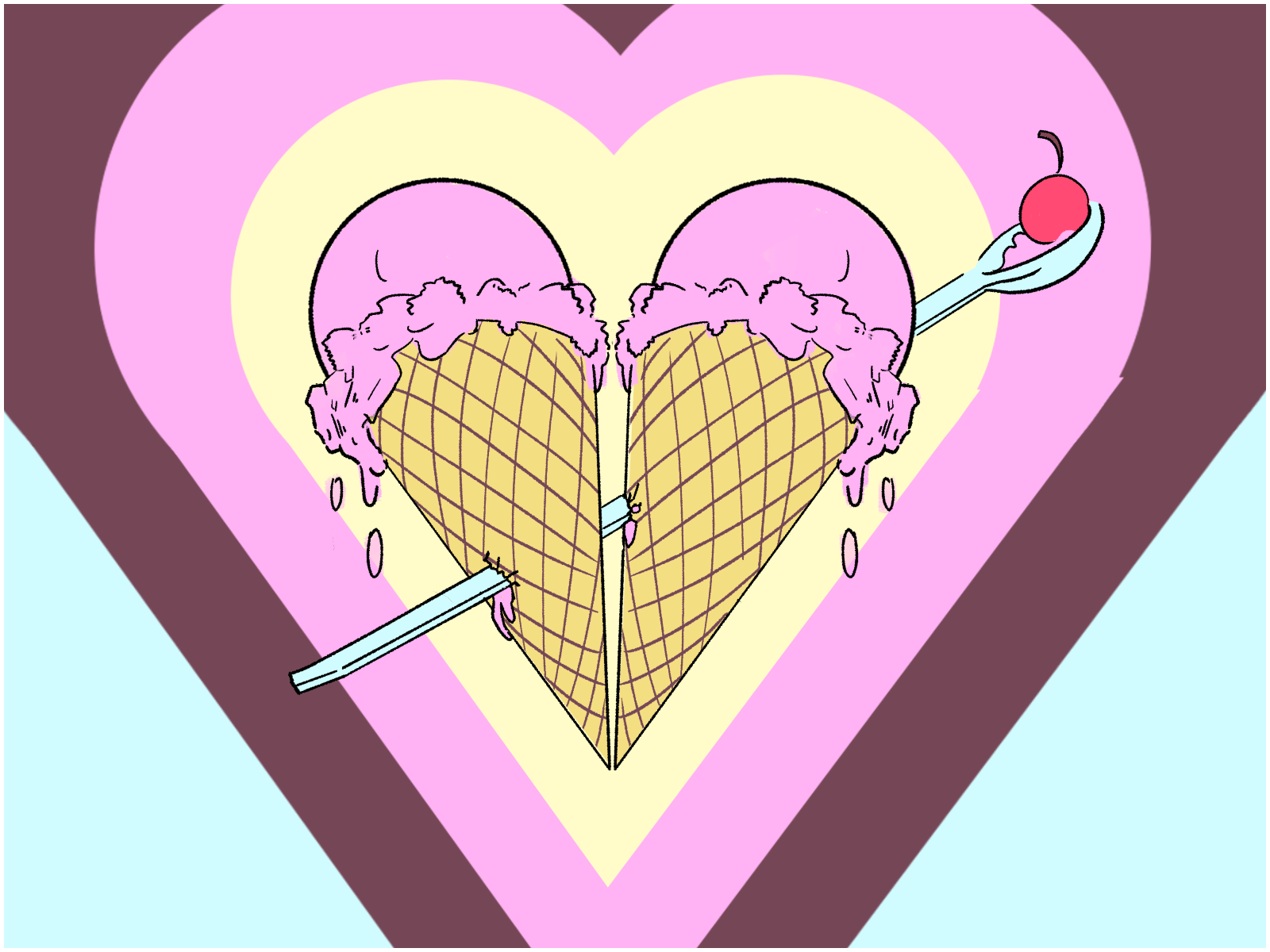Why a cone is the proper vessel for ice cream eating
It’s time to tackle the world’s most heated and legendairy debate: cup or cone.
So here’s the scoop. I am a firm believer that cones are superior when it comes to ice cream. And if you’re not already, in a few short minutes, you will be.
The most obvious point is that you tend to get more ice cream if you get a cone. Because of the cone shape, part of the scoop trickles down toward the bottom, causing the server to add some more sweet goodness on the top to get that nice circular shape. With a cup, you don’t get that extra bit, and as an advocate for eating the most amount of ice cream possible, I find that pretty criminal.
If you’re one of those people who just doesn’t like the taste of cones, I counter with this: how does it feel to have a personal vendetta against the environment? Sucking it up and eating a cone seems like a small price to pay for being more eco-friendly. In fact, when there’s no paper protection on the cone, they’re zero-waste (and even if there is, the paper is easily recyclable).
Cups, on the other hand, are generally not recyclable or compostable. And don’t even get me started on the plastic spoons they require.
What’s more, cones are just infinitely more fun than cups. If the thrill of the melty drip doesn’t bring out your silly side, perhaps the golden bite of cone and ice cream will result in an ear-to-ear smile.
If you’re still not convinced, I’ll offer this anecdote that, quite honestly, changed my perception of this debate once and for all.
It’s a perfect July day and I had just acquired a heaping cone of dark chocolate ice cream. I’m walking down the street with my friend, enjoying the weather and the cold treat.
Suddenly, a wave of inexplicable clumsiness comes over me. In slow motion, I watch my cone topple out of my hands and onto my beige pants. My friend screams. Pedestrians gasp. But I remain calm.
I sprint into the nearest pharmacy and purchase some soap. I then make my way across the street to a shawarma place, dodging the customers who can’t look away from the massacre that is my pants. I slip into the bathroom, take them off, and begin working on the stains, fervently treating them with soap and cold water.
Ten minutes in, they’re good as new. The only problem? They’re soaked. Luckily, I have a men’s shirt in my tote bag, in case I get cold. Avant-garde fashion designer that I am, I manage to wear it as a skirt, ensuring that I can continue on with my day while I wait for my pants to dry. It’s most certainly a look.
At this point, you’re probably asking yourself why I would tell you the magnum opus of cone horror stories to convince you of their superiority. My response is as such: while the great cone-gate of 2022 was less than ideal, everything worked out in the end. My pants are still in commission and I got another ice cream cone to replace my fallen snack.
You see, I’ve wasted valuable years of my life saying no to cones in fear of making a mess. And when I finally started saying yes, of course there were bound to be some (major) slip-ups.
But, at the ripe age of 21, I’ve learned that worry shouldn’t stop you from going for the things you want, ice cream cones included.
